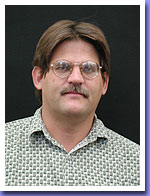报告题目:Cooperative Motion and Structural Relaxation in Glass-Forming Materials
时间:6月5日,周四,上午10:00-10:40
地点:907-1445
邀请专家:Dr. Jack F. Douglas
Materials Science and Engineering Division, National Institute of Standards and Technology (NIST), USA

报告人简介:
Dr. Jack F. Douglas,
Fellow of American Physical Society
Fellow of NIST
l B.S. Chemistry, Virginia Commonwealth University
l M.S. Mathematics,Virgnia Commonwealth University (1981)
l Ph.D. in Chemistry, University of Chicago (1986)
报告摘要:Collective motion and relaxation in coarse-grained polymeric liquids is investigated by complementary molecular dynamics (MD) simulations and analytic modeling. MD simulation indicates that nanoparticle additives, which can effectively modify molecular packing, can cause significant changes in both the strength of the temperature dependence of structural relaxation time t (as measured by the ‘fragility’ of glass formation) and the spatial extent of cooperative particle motion in the form of string-like dynamic structures that spontaneously emerge at equilibrium in glass-forming liquids. Physical arguments of Adam-Gibbs (AG) relating the rate of structural relaxation to the extent (average mass) of cooperative motion in glass-forming liquids are summarized and we test whether this model can rationalize the large nanoparticle additive-induced changes in polymer melt dynamics found in our simulations where the string excitations are directly identified with the abstract “cooperatively rearranging regions” of AG. This comparison leads to a remarkable reduction of all our relaxation data and provides a new means of testing the AG model. These observations are consistent with the implicit AG picture that changes in the fragility of glass-forming liquids with the addition of additives, finite size confinement, and changes of molecular structure derive from changes in the strength of the temperature dependence of the extent of cooperative molecular motion. The classical entropy theory of glass-formation, combining a thermodynamic calculation of the configurational entropy sc and the AG model of structural relaxation relating t to sc, is considered as a complementary tool to gain analytic insights into these additive-induced effects on the temperature dependence on structural relaxation in glass-forming liquids.